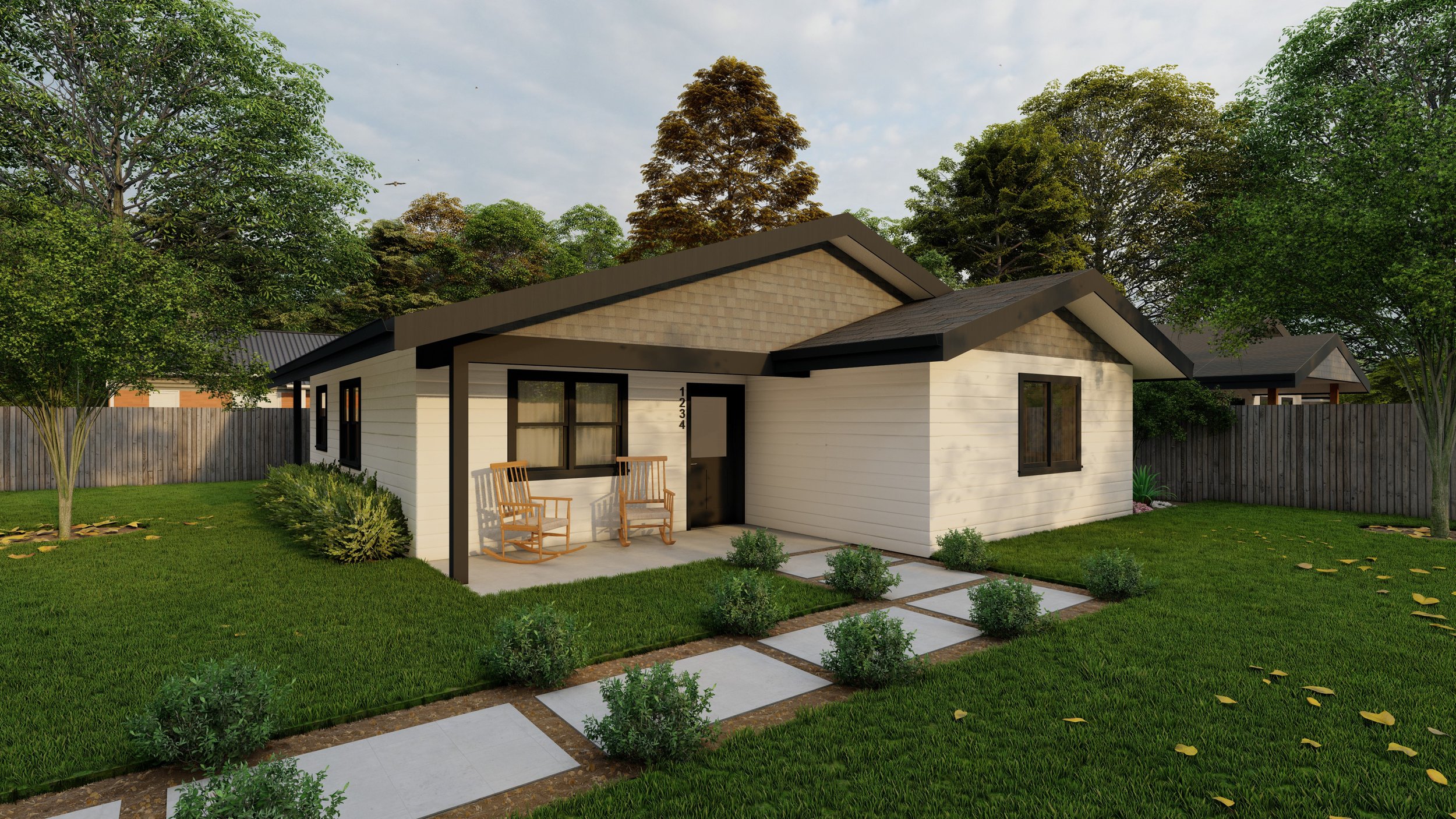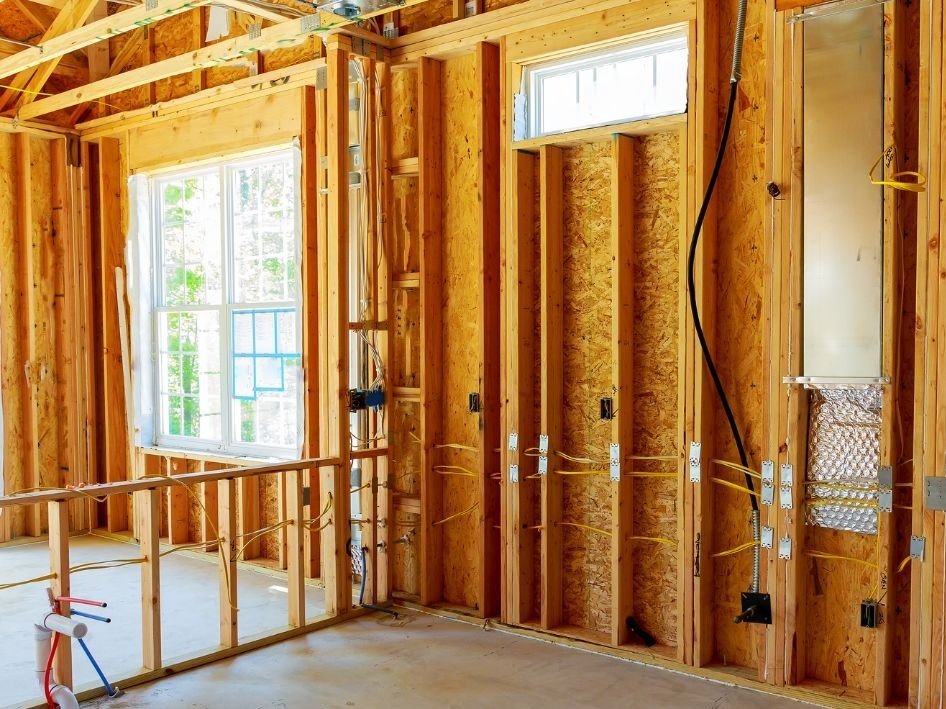Everything You Need To Know About Building an ADU in California
As housing costs continue to rise and the demand for flexible living solutions grows, Accessory Dwelling Units (ADUs) have emerged as a popular and practical option for homeowners. These small, self-contained living spaces offer an affordable alternative to traditional homes, making them an attractive choice for many. ADUs also support multigenerational living, allowing families to stay close while maintaining privacy, and provide potential rental income, offering a steady revenue stream. Recent legislative changes in California have made it easier than ever to build ADUs, streamlining the permitting process and relaxing zoning laws. Investing in an ADU is a wise decision, offering high returns on investment, tax benefits, and promoting sustainable living by utilizing existing land and infrastructure.
Let’s dive into the details and determine if building an ADU is the right decision for you!
Shelf Ready ADU Plans Now Available through Sacramento County which allow residents for a faster, low-cost way to build a detached ADU (Ref: Saccounty.gov)
What is an ADU?
An ADU, or Accessory Dwelling Unit, is a secondary residential unit located on the same lot as a primary single-family home. These units can take various forms, including:
Detached ADUs: Stand-alone structures separate from the main house.
Attached ADUs: Extensions or additions to the main house.
Garage Conversions: Transforming an existing garage into a livable space.
Basement Conversions: Converting a basement into a separate dwelling unit.
ADUs typically include essential living facilities such as a kitchen, bathroom, bedroom, and living area, making them fully functional independent living spaces. ADUs are typically smaller than single-family homes. They are designed to be secondary units on a property with an existing primary residence. This means they often have more compact layouts and require efficient use of space.
In California, an ADU is a secondary dwelling unit that has its own kitchen, bathroom, and access. Some additional requirements include:
Must provide independent living facilities for one or more people
Must include permanent provisions for living, sleeping, eating, cooking, and sanitation
Must comply with setback standards
Must comply with lot coverage and minimum lot size requirements
Must be on the same lot as the main residence
Why Are ADUs Rising in Popularity in California?
Affordable Housing
ADUs offer a more affordable housing option compared to traditional homes, as they can be built without the need to purchase additional land, significantly reducing costs.
Several factors contribute to the growing popularity of ADUs. Firstly, ADUs offer a more affordable housing option compared to traditional homes, as they can be built without the need to purchase additional land, significantly reducing costs. Recent legislative changes in California have also made it easier to build ADUs by streamlining permitting processes, reducing parking requirements, and relaxing zoning laws, making ADU construction more accessible and appealing to homeowners. Additionally, California's ongoing housing crisis has led to a significant shortage of affordable housing options, and ADUs provide a practical solution by increasing the housing supply within existing neighborhoods without the need for new land development.
2. Rise in Multi-Generational Living
ADUs are also ideal for multigenerational living, allowing families to stay close while maintaining privacy, as they can house aging parents, adult children, or provide guest accommodations. Multi-generational living is a rising trend that is driven by various economic, social, and cultural factors. One of the primary reasons is the increasing cost of housing. With housing prices soaring, many families find it more economical to live together under one roof. This arrangement allows them to share expenses, such as mortgage or rent, utilities, and groceries, making it more affordable for everyone involved.
Another factor is the aging population. As people live longer, there is a growing need for elder care. Multigenerational living enables families to provide care for aging parents or grandparents within the home, rather than relying on external care facilities. This not only reduces costs but also ensures that elderly family members receive personalized care and support from their loved ones
Multigenerational living enables families to provide care for aging parents or grandparents within the home, rather than relying on external care facilities.
Additionally, the rise in student debt and the challenging job market have led many young adults to move back in with their parents after completing their education. This "boomerang" generation finds it financially beneficial to live with their parents while they establish their careers and pay off their debts.
3. Additional Revenue Streams
Homeowners can generate additional income by renting out their ADUs, helping to offset mortgage payments and provide a steady revenue stream. The versatile nature of ADUs allows them to be used as home offices, guest houses, or even short-term vacation rentals. Furthermore, many states and municipalities have updated zoning laws to make it easier to build ADUs, recognizing their potential to address housing shortages and affordability issues. Lastly, Sacramento is experiencing rapid population growth, increasing the demand for housing, and ADUs help meet this demand by providing additional living spaces within established neighborhoods.
Recent legislative changes have made the process [of building an ADU] more accessible.
Is it Difficult to Build an ADU in California?
Building an ADU in California can be challenging, but recent legislative changes have made the process more accessible. The streamlined permitting process requires local jurisdictions to approve applications within 60 to 90 days, though navigating local zoning laws and regulations can still be complex. Costs vary widely depending on size, design, and location, with permit fees ranging from $500 to $2,500, and additional expenses for environmental and structural reviews. Despite these challenges, the benefits of building an ADU, such as generating rental income, providing housing for family members, and contributing to the housing supply, often outweigh the difficulties. With careful planning and the right resources, building an ADU in California is achievable.
What Are the Steps to Building an ADU?
Research and Planning:
If you want to compare multiple layouts [for your ADU], try Walk Your Plans Sacramento as this will help you understand the various layout options and find the one that’s best for you!
First, determine if you want to build an attached ADU or a detached ADU. If you’re not sure, contact a local ADU builder for information on what might be right for you. Then contact your local planning and zoning department to determine zoning requirements. Each city or county may have specific requirements regarding ADU size, height, setbacks, and parking - and these may differ depending on if it’s attached or detached!
2. Design and Permitting:
Now that you’ve determined that you can build on your property and you know what your size requirements and/or limitations are- you’re ready to start designing! Work with a local architect or utilize a pre-approved "shelf ready" plans. If you want to compare multiple layouts, try Walk Your Plans Sacramento as this will help you understand the various layout options and find the one that’s best for you!
Once you’ve selected the perfect layout, you’ll need to submit a permit application. Prepare and submit your permit applications to the local building department. This typically includes site plans, design drawings, and proof of compliance with building codes. The permitting process can take anywhere from 60 to 90 days.
3. Financing:
Explore financing options such as home equity loans, construction loans, or grants. For example, the CalHFA ADU Grant Program provides up to $40,000 in assistance for predevelopment costs.
Select a licensed contractor to handle the construction of your ADU
4. Construction:
If you haven’t already done so, select a licensed contractor to handle the construction of your ADU. Ensure they have experience with ADU projects and are familiar with local building codes. Once permits are approved, construction can begin. This phase includes site preparation, foundation work, framing, plumbing, electrical, and finishing touches.
5. Inspection and Approval:
Throughout the construction process, your contractor will schedule inspections with the local building department to ensure compliance with building codes and regulations. After passing all inspections, obtain final approval from the building department. Your ADU is now ready for occupancy.
Shelf Ready ADU Plans Now Available through Sacramento County which allow residents for a faster, low-cost way to build a detached ADU (Ref: Saccounty.gov)
What is a Shelf-Ready ADU?
A "shelf ready" ADU (Accessory Dwelling Unit) in California refers to pre-approved, standardized plans for building ADUs that are readily available for homeowners to use. These plans have already been reviewed and approved by local building departments, ensuring they meet all relevant building codes and regulations. This streamlines the permitting process, making it faster and more cost-effective for homeowners to construct ADUs.
For example, Sacramento County offers a selection of shelf ready ADU plans, including various sizes and layouts, such as a 460-square-foot studio, an 870-square-foot two-bedroom unit, and a 1,184-square-foot three-bedroom unit. These plans are designed to comply with the 2022 California Residential, Electrical, Mechanical, and Plumbing Code requirements, which helps reduce the time and expense associated with the approval process
Is Building an ADU a Wise Investment?
Investing in an ADU can be a smart financial decision for several reasons:
Increased Property Value: Adding an ADU can significantly boost the overall value of your property. Potential buyers often see ADUs as a desirable feature, offering additional living space or rental income potential
Rental Income: ADUs can generate substantial rental income, especially in high-demand housing markets. This income can help cover the costs of building the ADU and provide ongoing financial benefits
Tax Benefits: Building an ADU can offer tax advantages, such as deductions for property taxes, mortgage interest, and depreciation. Consult with a tax advisor to understand the specific benefits in your area
Flexibility and Versatility: ADUs provide flexible living arrangements that can adapt to changing needs over time. Whether used for family, guests, or rental purposes, they offer valuable versatility
Sustainability: ADUs promote sustainable living by utilizing existing infrastructure and reducing the need for new land development. They can also be designed with energy-efficient features to minimize environmental impact
Adding an ADU can significantly boost the overall value of your property.
In conclusion, ADUs (Accessory Dwelling Units) are small, self-contained living spaces built on the same property as a primary residence. They are rising in popularity due to their affordability, making them a more accessible housing option compared to traditional homes. ADUs also support multigenerational living, allowing families to stay close while maintaining privacy, and they offer potential rental income, providing homeowners with a steady revenue stream.
California has made significant legislative changes to facilitate the construction of ADUs, including streamlined permitting processes, reduced parking requirements, and relaxed zoning laws. These changes have made it easier than ever for homeowners to build ADUs, addressing the state's housing shortage and providing practical solutions for affordable housing.
Investing in an ADU is a wise decision due to the potential for a high return on investment (ROI). ADUs can increase property value, generate rental income, and offer flexible living arrangements. Additionally, they promote sustainable living by utilizing existing land and infrastructure, reducing the need for new land development.
Overall, ADUs present a valuable opportunity for homeowners to enhance their property, support their families, and contribute to solving the housing crisis in California.









